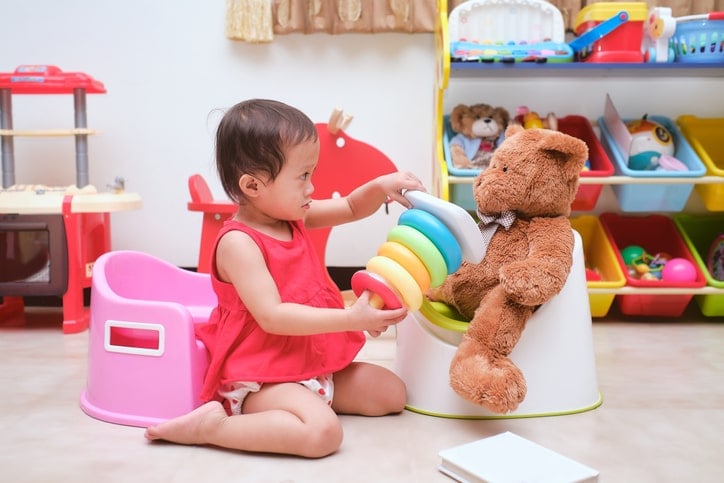Advice
When to start, and when to wait

Identifying signs of toilet training readiness in children can help make the process smoother and more successful. However, not all signs are universally applicable. It’s essential to establish personalized goals for potty training before looking for developmental indicators that align with those goals.
Early proponents of the concept of toilet training readiness, such as Benjamin Spock and T. Berry Brazelton, emphasized the importance of waiting until a child has reached specific physical and psychological milestones to ensure successful training outcomes (Brazelton et al 1999).


While it is valuable to observe developmental milestones to gauge a child’s readiness for toilet training, the plethora of proposed signs of readiness can be overwhelming and not all may be relevant to every family’s goals.
For example, the readiness criteria may vary depending on whether a parent seeks complete toileting independence or more modest goals. It is not necessary to wait for a child to exhibit every proposed sign of readiness before commencing training. Some signs, such as staying dry during daytime naps, may not be essential for successful training outcomes (Wyndaele et al 2020).
Moreover, parents can actively engage their children in the toilet training process by fostering curiosity and motivation, rather than solely relying on spontaneous signs of readiness.
Timing of Toilet Training: A Personalized Approach
There is no one-size-fits-all approach to the timing of toilet training. While monitoring developmental milestones can provide insight into a child’s readiness, it is crucial to align these milestones with the specific goals set by the family.
Some essential background conditions, such as ensuring the child is healthy, relaxed, and cooperative, should be in place before initiating toilet training to promote positive associations with the process.
It is important to skip signs of readiness that are not relevant to the desired goals and focus on developmental indicators that are consistent with the family’s objectives.
Actively Preparing for Toilet Training
Parents can take proactive steps to introduce their children to potty training skills and concepts, rather than waiting for skills to emerge naturally. Stimulating interest in toilet training, exposing children to relevant vocabulary, and providing opportunities for practice can help accelerate the development of necessary skills.
Key Indicators of Toilet Training Readiness
Research suggests that certain signs, such as a child expressing a need to use the toilet, displaying independence in completing tasks, and showing awareness of voiding needs, are strong predictors of successful toilet training outcomes.
Conclusion
By aligning signs of toilet training readiness with personalized goals and actively preparing children for the process, parents can enhance the likelihood of successful toilet training outcomes.
References: Signs of Toilet Training Readiness
References to be added
-

 Destination8 months ago
Destination8 months agoSingapore Airlines CEO set to join board of Air India, BA News, BA
-

 Breaking News10 months ago
Breaking News10 months agoCroatia to reintroduce compulsory military draft as regional tensions soar
-

 Gadgets3 months ago
Gadgets3 months agoSupernatural Season 16 Revival News, Cast, Plot and Release Date
-

 Tech News12 months ago
Tech News12 months agoBangladeshi police agents accused of selling citizens’ personal information on Telegram
-

 Productivity11 months ago
Productivity11 months agoHow Your Contact Center Can Become A Customer Engagement Center
-

 Gadgets3 weeks ago
Gadgets3 weeks agoFallout Season 2 Potential Release Date, Cast, Plot and News
-

 Breaking News10 months ago
Breaking News10 months agoBangladesh crisis: Refaat Ahmed sworn in as Bangladesh’s new chief justice
-

 Toys12 months ago
Toys12 months ago15 of the Best Trike & Tricycles Mums Recommend























